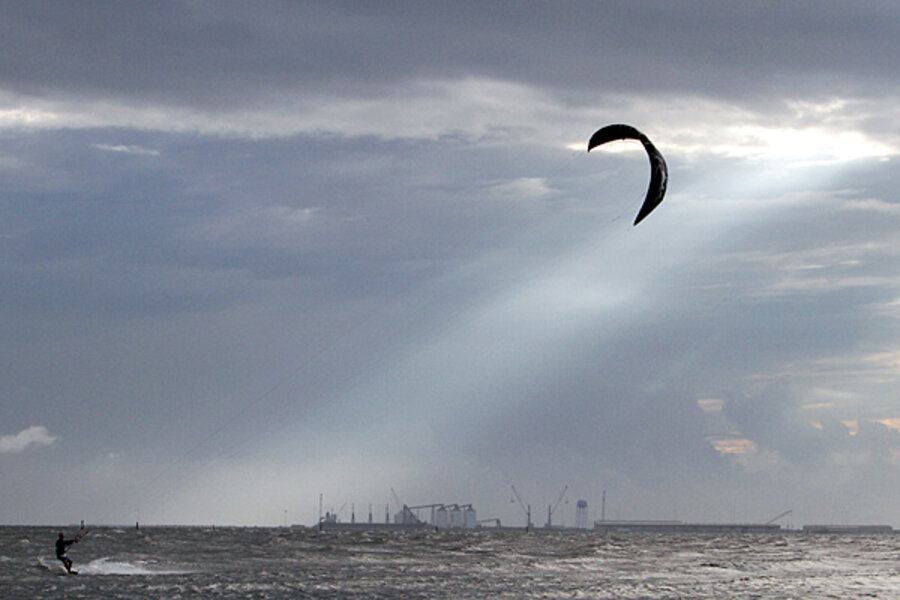Tropical storm Karen: Why gas prices will weather the storm
Loading...
As tropical storm Karen barrels toward the Gulf coast Friday, oil and gas companies are evacuating nonessential personnel and scaling back production in a region that accounts for nearly a quarter of total US oil production.
Fear not, markets and motorists. Tropical storm Karen's relative small size combined with an increase in onshore production means any impact on US energy is likely to be minimal. The government shutdown's downward pressure on oil and gas prices will further temper any spikes we see from tropical storm Karen.
"Most tropical systems, when they make landfall, they destroy demand," says Tom Kloza, chief oil analyst for GasBuddy.com, a website that tracks retail gasoline prices, in a telephone interview. "You might have a run up if there’s a large system but ultimately over the next three to five days they create lower demand because it’s miserable, it's raining, and people move around less."
US oil prices rose above $104 a barrel early Friday before settling to $103.80 late Friday morning. Prices had been falling over the week on concerns that a government shutdown would slow the economic recovery and reduce demand for gasoline and other petroleum products. Retail prices averaged $3.36 a gallon for regular unleaded gasoline in the US Friday, down six cents from a week ago, according to AAA, the national auto club based in Heathrow, Fla.
At least three major Gulf producers reported platform shutdowns and evacuations, according to news reports Friday. Others were pulling nonessential personnel and closely tracking the storm's path.
Early Friday, tropical storm Karen had maximum winds of 60 miles per hour, according to the National Hurricane Center in Miami, and was about 275 miles southwest of the mouth of the Mississippi River. It was moving northwest at 10 m.p.h. and was expected to make landfall late Saturday or early Sunday.
It's a concern for those in the path of the storm, but its threat to total offshore production pales in comparison to previous hurricanes that have wiped out huge swaths of production. And Gulf production has enjoyed a relatively calm 2013 season with only two hurricanes forming so far, half the normal amount.
"By the standards of [hurricanes] Katrina and Rita and Gustav and Ike, the impact will be minimal," says James Williams, an energy economist at WTRG Economics, an energy analysis firm based in Arkansas. "We lost more in those two hurricane cycles than current production in total."
Part of that is because new drilling techniques are fueling an onshore US production boom, while the legacy of the 2010 BP oil spill has helped reduced production offshore.
In 1997, 26 percent of the nation's natural gas came from the Gulf of Mexico, according to the US Energy Information Administration. In 2012, the level dropped to 6 percent. Gulf oil production stayed at 26 percent of the country's total between 2007 and 2011. It fell to 19 percent last year. That dynamic buffers any potential impact from tropical storm Karen.
"We'll have the normal evacuations; They’ll shut some of the wells in," Mr. Williams says in a telephone interview, "but starting about Tuesday they’ll start to repopulate the platforms and bring them up again."
Any change in the market will follow that trend.
"[Tropical storm Karen] might be good for a buck or two," Williams says. "In the past it might have been good for five or ten."






